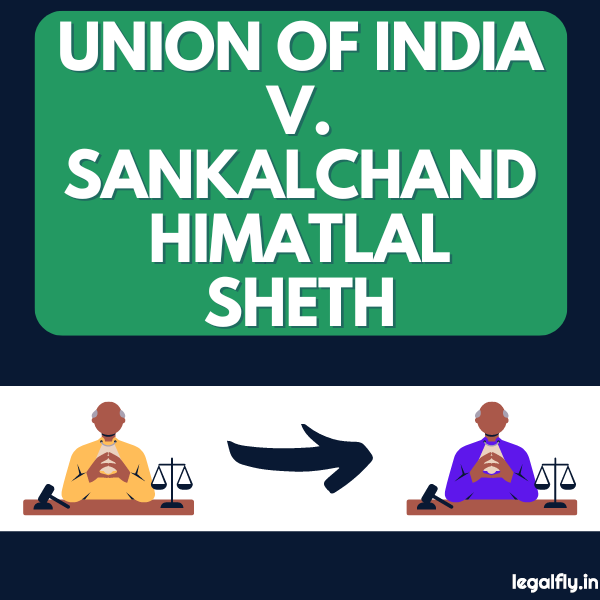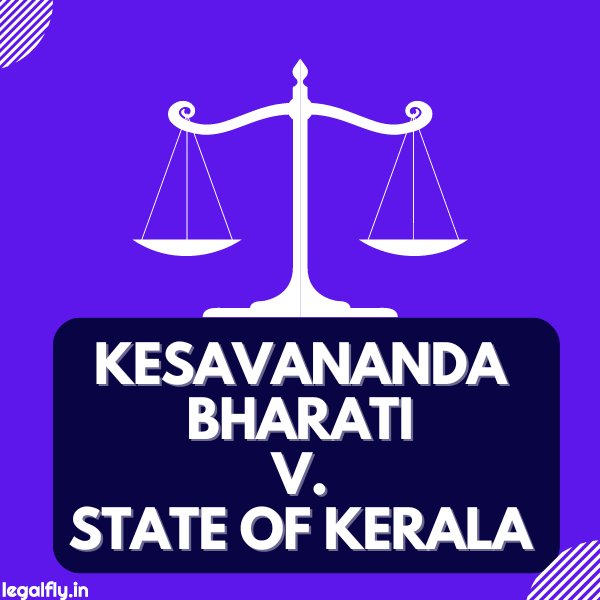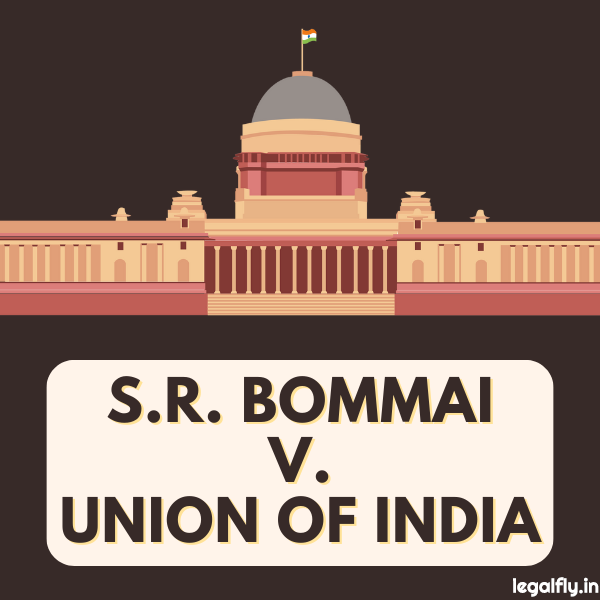Case Name: Union of India vs. Sankalchand Himatlal Sheth & Anr.
Court: Supreme Court of India
Year: 1977
Citation: 1977 AIR 2328, 1978 SCR (1) 423, 1977 SCC (4) 193.
Table of Contents
Introduction: Overview of the Landmark Case of Union of India v. Sankalchand Himatlal Sheth
The case of Union of India v. Sankalchand Himatlal Sheth [(1977) 4 SCC 193] was a landmark Supreme Court judgement that interpreted the scope of the President’s power to transfer judges between High Courts under Article 222 of the Constitution. Delivered in 1977, the case arose when the petitioner, Justice Sankalchand Himatlal Sheth of the Gujarat High Court, challenged the constitutional validity of his transfer to the Andhra Pradesh High Court.
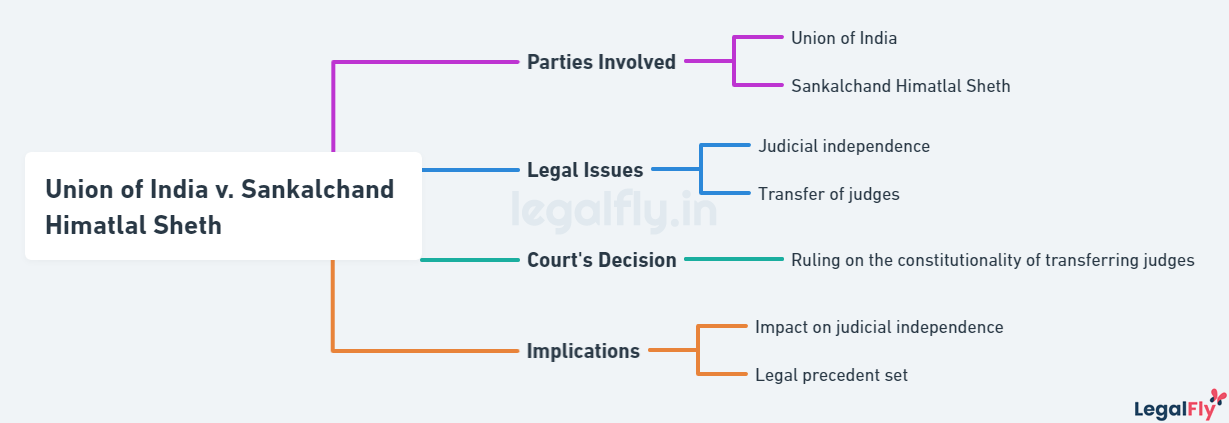
The case gained prominence as it involved complex questions regarding the independence of the judiciary and the balance of power between the executive and the courts. The Supreme Court’s interpretation set an important precedent on the procedure for inter-state transfers of High Court judges, which aimed to balance judicial independence with administrative exigencies. The ruling continues to hold significance as a vital safeguard for protecting the basic structure of the Constitution.
The Historical Significance of Judicial Transfers in India
Before the landmark 1977 Union of India v. Sankalchand Himatlal Sheth case, the executive branch in India held significant control over transfers of High Court judges under Article 222 of the Constitution. The President could transfer judges with consent, but there were no clear checks on this power.
In the decades after independence, wholesale transfers of High Court judges by the executive were not uncommon. This allowed the ruling government to influence the judiciary and important cases potentially. However, judges had little recourse to challenge these transfers at the time.
As scholar BD Dua wrote, executive-judicial conflict over judicial transfers reached an apex in the 1970s leading up to the Sankalchand case. The case emerged from a growing pushback by the judiciary against executive overreach in transfers. It eventually led to a landmark Supreme Court interpretation limiting the scope of Article 222.
Article 222 of the Indian Constitution
Article 222 of the Indian Constitution empowers the President of India to transfer judges between high courts. This provision was included to facilitate the transfer of judges where necessary for the proper administration of justice.
Article 222 states that the President may transfer a judge after consultation with the Chief Justice of India. The key aspects related to the Sankalchand Himatlal Sheth case are:
- Article 222 provides the power to transfer judges between High Courts, indicating transfers can be initiated by the executive rather than the judiciary. This became a point of contention.
- The article requires the President to consult with the Chief Justice of India, but the nature and extent of this consultation were unclear. This lack of clarity allowed different interpretations between the executive and judiciary.
- The article provides no guidance on the reasons or basis for transferring a judge. It does not mention seniority, public interest, consent of the judge, etc. This lack of procedural safeguards was concerning.
- Most importantly, Article 222 does not explicitly mention the independence of the judiciary or the need to uphold it through the transfer process. This omission later became central to the case.

While Article 222 provides the legal basis for judicial transfers, its bare text omitted key principles and processes. This lack of clarity allowed the executive and judiciary to develop conflicting interpretations, ultimately leading to the landmark Union of India v. Sankalchand Himatlal Sheth case.
Analyzing the Decision: Union of India v Sankalchand Himatlal Sheth
The landmark case of Union of India v Sankalchand Himatlal Sheth (1977) 4 SCC 193 was a significant Supreme Court judgment regarding the constitutional validity of transferring judges between High Courts.
The Supreme Court examined the key issue of whether the executive branch of government (the President acting on the aid and advice of the Council of Ministers) had absolute discretion in transferring judges or whether transfers should require consent from the judge being transferred.
The case arose when Justice Sankalchand Himatlal Sheth of the Gujarat High Court was transferred to the Andhra Pradesh High Court without his consent. He challenged this transfer by filing a writ petition under Article 32 of the Constitution.
Justice Sheth argued that compulsory transfers without consent undermine the independence of the judiciary, which is part of the basic structure of the Constitution. He contended that such transfers should only be made in the public interest and with the judge’s consent.
The Supreme Court, in a majority 3:2 verdict, upheld Justice Sheth’s position. It ruled that the President’s power under Article 222 to transfer judges is not absolute or arbitrary. Transfers must be for legitimate public interest with cogent reasons and require consent from the judge.
The Court held that compulsory transfers without consent would compromise the independence of the judiciary and violate Article 222. Consent was an important safeguard, and non-consensual transfers should only be made in exceptional cases after due consultation.
This landmark ruling established that the judiciary could not be subordinated to the executive will in transfer matters. It reinforced judicial independence and the judiciary’s role in upholding the Constitution.
The Supreme Court’s Interpretation of Judicial Independence
In the Sankalchand case, the Supreme Court had to interpret the meaning of judicial independence as enshrined in the Constitution. The Court emphasized that the independence of the judiciary is a cardinal principle of the Constitution, essential to upholding the rule of law and democracy.
The Court held that judicial independence requires that judges be able to perform their duties without interference or influence from the executive or legislative branches. This includes freedom in areas like judicial appointments, transfers, promotions, and terms of service.
Specifically, regarding transfers, the Court stated that the norm is for judges to have a minimum tenure in a High Court before being considered for transfer. Frequent transfers without consent would affect judicial independence.
Overall, the Supreme Court interpreted judicial independence as an inviolable basic feature of the Constitution. This landmark view shaped how judicial transfers were handled in later years to balance judicial independence with administrative exigencies.
Impact on the Judicial System and How the Case Shaped Future Judicial Appointments and Transfers
The landmark case of Union of India v Sankalchand Himatlal Sheth significantly impacted judicial appointments and transfers in India. Before this case, the executive branch had almost complete control over transferring judges between high courts under Article 222 of the Constitution. However, the Supreme Court’s interpretation in Sankalchand asserted the judiciary’s independence and curtailed the executive’s ability to transfer judges arbitrarily.
As a result, the judgment laid down strict guidelines and limitations on the transfer of High Court judges. It established the principle that transfers could not be made arbitrarily or without the judge’s consent solely for administrative convenience. The ruling affirmed that forced transfers without cause could threaten the independent functioning of the judiciary.
In the decades after Sankalchand, the judiciary continued to gain more influence over appointments and transfers. The Supreme Court expanded its oversight through landmark cases like Supreme Court Advocates-on-Record Assn. v. Union of India (1993), which established the collegium system for appointments. The importance of the judiciary in selecting judges was further solidified over time.

After this case, High Court judges could only be transferred with their consent, except in compelling situations involving allegations of misconduct or impropriety. The Supreme Court clarified that transfers without consent required strong justifications pertaining to public interest. This significantly curtailed the Central government’s discretion and instilled greater transparency and procedural fairness in judicial transfers.
Overall, the Sankalchand case has led to much stricter protocols for inter-high Court transfers to protect judicial independence. It shaped the appointment process by necessitating the judge’s written consent, which could only be dispensed with under extraordinary circumstances. The ruling was instrumental in insulating the judiciary from potential executive interference and upholding constitutional safeguards. Its effects continue to be relevant today in regulating judicial transfers.
Comparative Analysis: Before and After Sankalchand Himatlal Sheth
Before the landmark Union of India v. Sankalchand Himatlal Sheth case in 1977, there was uncertainty around the limits of the President and executive’s power to transfer judges between High Courts without consent. Some legal scholars argued that judicial transfers required consent to maintain judicial independence, while others claimed the President had wide discretion.
The Sankalchand case clarified this issue by establishing that the President did not have unfettered power to transfer judges, and consent was required to protect the basic structure of the Constitution. As a result, the transfer process changed significantly after 1977. Judges could no longer be arbitrarily moved between High Courts based on executive discretion alone. Instead, principles of judicial independence required transfers to be in the public interest and protect the judiciary from interference.
Over time, norms evolved to make the transfer process more consultative and transparent. The Chief Justice of India’s opinion became increasingly important in evaluating transfer proposals. By the 1990s, a collegium system emerged where panels of senior judges recommended transfers rather than the executive acting unilaterally. This evolution from a more arbitrary practice to a consultative system was shaped profoundly by the Sankalchand case’s emphasis on judicial independence, further reinforced by the S.P. Gupta v. Union of India 1981 case, which highlighted the need for transparency in judicial appointments and transfers. Today, while the President formally orders transfers, they are done through established procedures valuing judicial consent.
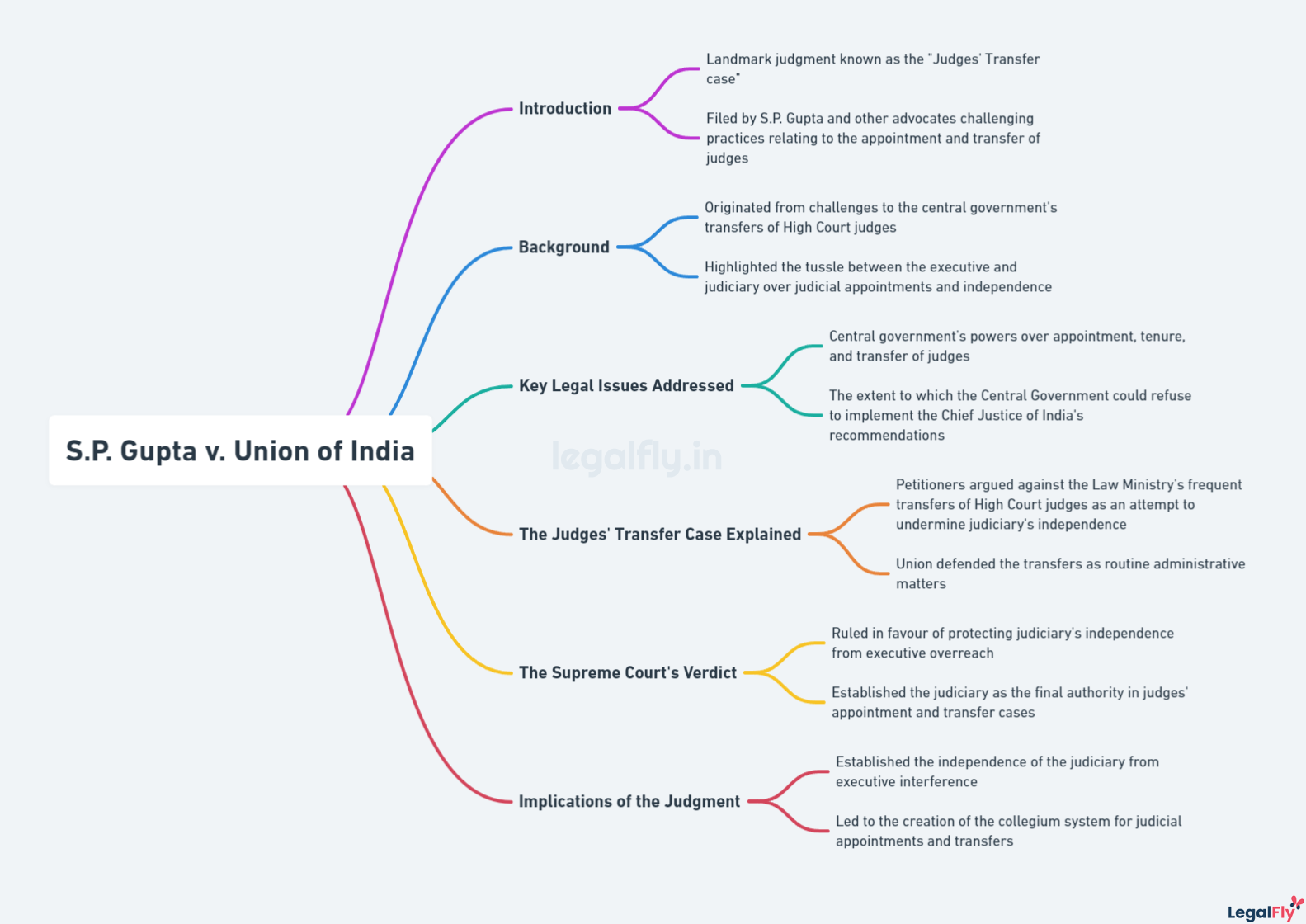
Conclusion: The Ongoing Relevance of the Case
The 1977 Supreme Court case Union of India v. Sankalchand Himatlal Sheth still holds relevancy today as it established important principles regarding the independence of the Indian judiciary. The case affirmed that high court judges cannot be transferred without their consent, protecting judicial independence from executive overreach.
The case set a precedent that the executive cannot arbitrarily transfer judges, which is essential for maintaining the separation of powers. This upholds the integrity of the courts and prevents the politicization of the judiciary. The principles from Sankalchand Himatlal Sheth are still cited in contemporary debates about judicial transfers and executive influence over the courts.
The case also continues to shape how Article 222 of the Indian Constitution regarding judicial transfers is interpreted. It established consent as an essential factor, which strengthened judicial independence. This precedent prevents unilateral transfers by the executive, preserving the autonomy of India’s higher judiciary.
Decades later, Sankalchand Himatlal Sheth remains a landmark case upholding judicial independence against potential executive overreach. Its principles are still invoked to maintain the courts’ separation of powers and integrity. The case shaped how judicial transfers are handled, cementing consent as a key factor. By limiting arbitrary transfers, it continues to protect the neutrality and fairness of India’s judicial system.

